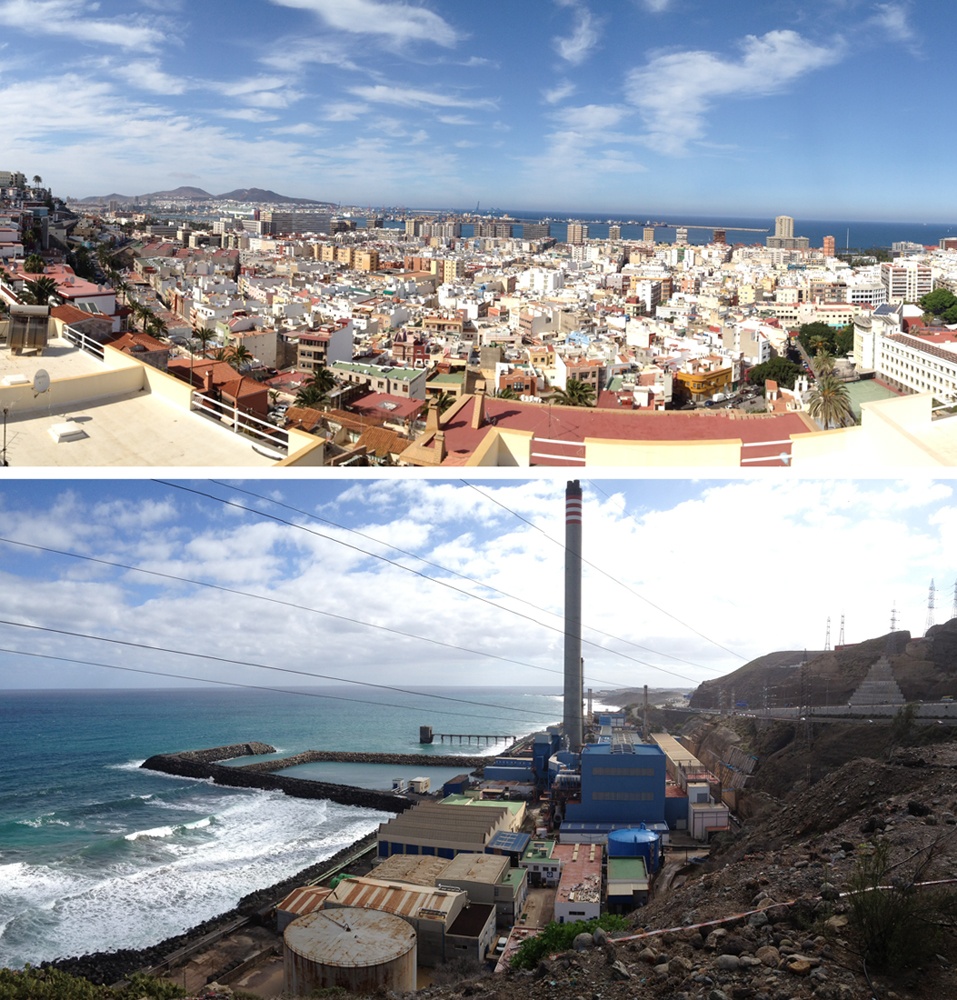
Uploaded on 2014-11-30 by AlejandroPC
[1]: https://edxuploads.s3.amazonaws.com/14173651033221788.jpg The top picture shows the city of Las Palmas de Gran Canaria (the main city of Gran Canaria Island). The bottom picture shows two industrial plants located at the south of Las Palmas: The plant for desalinated water production, and the electric energy plant from thermal sources Gran Canaria is a small island, and like the other islands of the Canary archipelago, it doesn't have rivers or lakes. So, one of the main problems of the island is to provide to its citizens sweet water for human consumption (for cleaning, cooking, gardens' maintenance, etc...). There are few water wells in the island, so the production of desalinated water is crucial for the daily life of the citizens. The production and distribution of desalinated water is an important infrastructure in the Island. Sea water is desalinated at the Jinamar plant (at the south of Las Palmas city), and then it is transported to more than fifty tanks. Water is distributed by the public water system to more of four hundred thousands citizens everyday. The other plant in the picture is related directly with the production of electric energy. We can't produce electric energy from water sources, due to the lack of rivers o lakes in our islands. So we produce electricity from thermal sources. That (the plant in the picture) is a thermal energy plant. It uses coal to produce electric energy, so this means a problem because it contributes to increase pollution. During the last decade, the Canary Islands are looking for a more sustainable way to produce energy, like sun, wind or ocean power. It´s very important to keep the enviromental balance, because the tourism, related to our ever springtime climate and our natural beaches and landscapes, is the main money income for this islands. at the same time, we look for new ways to produce more desalinated water in a more sustainable way, and to do more responsible consumption of this resource.